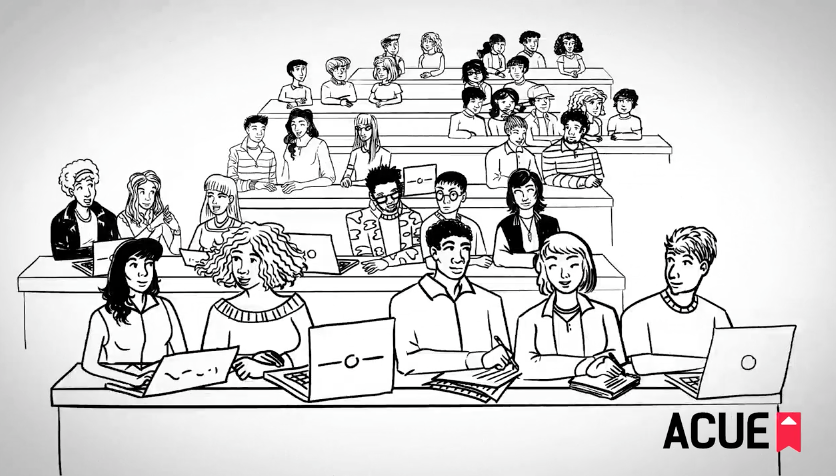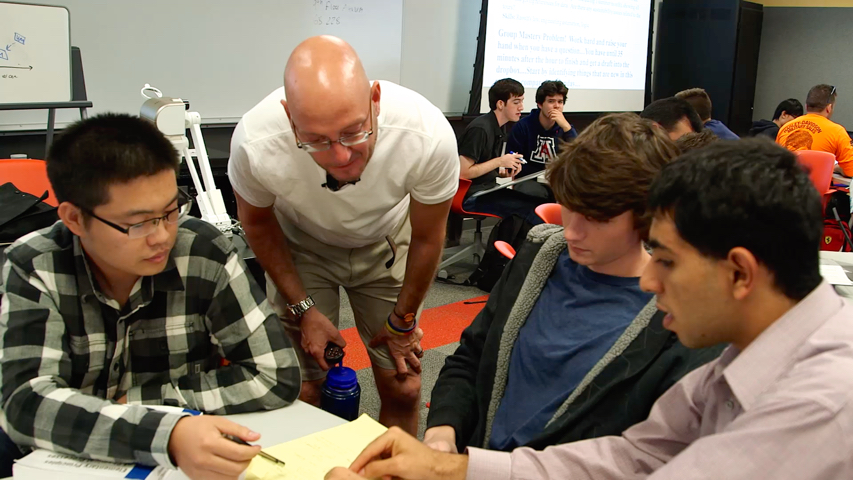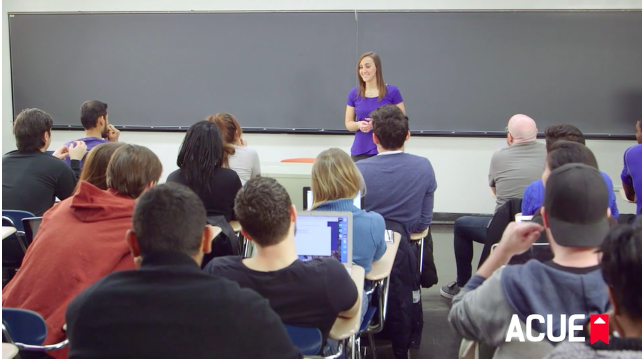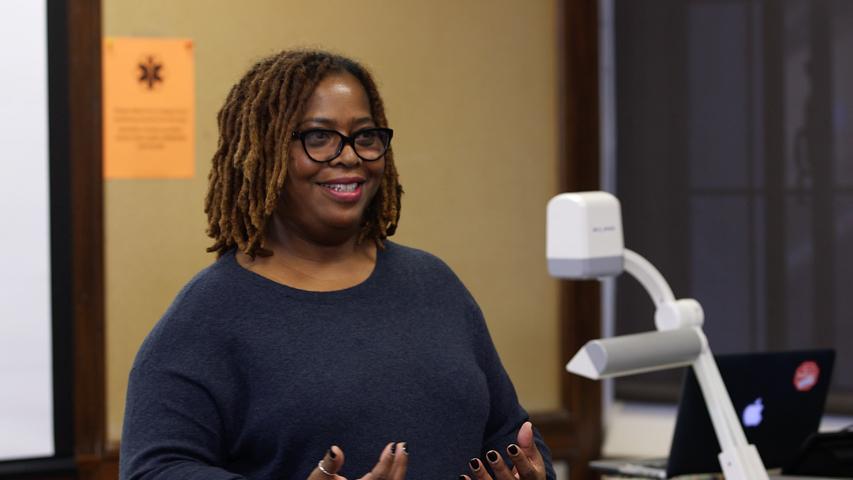You’re on a road trip but are uncertain whether you’re headed in the right direction. What do you do? You can either continue on your way and hope you arrive at your destination or ask someone in the area how to get there. If you choose the first option, you might be successful—or you may later realize you made a wrong turn and are completely lost. With the alternate option, however, you can gather the information needed to make your next turns with the confidence that you are following the best route and will reach your destination.
Collecting feedback from your students is much like pausing midway along a road trip to confirm if you’re headed in the right direction, while you still have time to adjust your path. Although it’s important to collect summative feedback at the end of the semester, it’s more helpful to the students currently sitting in your classroom if you have a planned checkpoint and can act on students’ responses. By making adjustments, you enhance students’ learning experiences, communicate to students that you value their feedback, and demonstrate that you practice what you preach—just as you encourage your students to use the feedback you provide them to progress in your courses, you use their feedback to refine your teaching practice and create greater opportunity for achievement.
There are a number of evidence-based practices for collecting midsemester feedback (e.g., Stop-Start-Continue, Point-of-View Postcards, etc.). In this post, Julie Candio Sekel, a member of the team that helped develop ACUE’s Course in Effective Teaching Practices, shares a two-tiered method as another possible model.
Model Overview
Since metacognition is critical to students becoming self-directed learners, I use midsemester surveys as opportunities for students to think about how their assignment preparation and efforts correspond with their performance in the course. This can be accomplished at the assignment- or assessment-level with an exam wrapper or a cognitive wrapper, which are question sets students complete after submitting an assignment or exam to reflect on their preparation, or on a larger scale with a midsemester “wrapper.” In the sections that follow, I outline the two surveys that my students complete so I can collect and act on their feedback.
Feedback That Benefits Students
I adjusted the questions included on Bowen’s cognitive wrapper template for the first part of my midcourse survey with the following questions:
- How much time do you spend preparing (reading, writing, and reviewing notes) for this course each week?
- What percentage of your total preparation time do you spend on each course activity? (A checklist is included.)
- On which assignment or activity were you most successful, and why were you successful (i.e., what preparation strategies did you use)?
- What do you plan to do in the second half of the semester to better prepare for course discussions and assignments?
I ask students to respond to these questions at the start of the class session and then meet with them individually for a portion of the class period. To prepare for this class session, I calculate students’ current grades to discuss with them, which ensures transparency and quantifies how students are doing. To keep the entire class engaged during the individual meetings, I plan a group-based activity with an accountability component—students either need to submit group work for a grade or share their responses aloud at the end of the class period.
During my time with the students, I ask them to share key takeaways from their question responses. I provide students’ cumulative grades and propose two strengths and two areas for improvement that I’ve identified based on their performance. By completing the “midsemester wrapper” questions, students think critically about and can articulate their own strengths and need areas, making them receptive to feedback in our one-on-one sessions and confident to set a plan for the second half of the semester.
I understand that my smaller class size allows me to meet with students individually, which may not be possible for all instructors; however, instructors of large classes can have all students complete the questions adapted from Bowen’s template and then request, privately, for students who are struggling to attend their office hours to review responses.
Feedback That Benefits the Instructor
While information collected from the first four questions helps students, it also helps me gauge whether the amount of time students spend preparing and the strategies they use are aligned with my expectations. Additionally, I find it useful to ask students questions they can respond to anonymously (many of which are also metacognitive) to guide me in making changes for the remainder of the semester. On a separate handout, or using an online survey tool, I ask students the questions listed below. Next to each question, I’ve stated what I learn from students’ responses and what action I take as a result.
| Question |
What I Learn |
What I Do |
| 1. Which assignment did you learn the most from completing? |
Which assignments most effectively build students’ knowledge base |
Determine whether steps or components of the most frequently named assignment are reflected in remaining course tasks |
| 2. Which assignment did you find most challenging and why? What did you do to overcome any questions, concerns, or struggles you had with it? |
What may be causing students to struggle in the course;What actions, if any, students are taking to overcome challenges |
Identify strategies or resources I can use or recommend to students to help them complete more challenging assignments—now and next semester |
| 3. Where have you sought support most often when completing assignments (e.g., the instructor in person or via email, the writing center, your classmates, resources in the LMS)? |
If students are using available resources and which they have found to be most helpful |
Recommend additional support options to students;Ensure students know when and how to receive assistance;Prompt students to consider how using available support can improve their performance |
| 4. Do you frequently refer to the syllabus, and are you aware of when all assignments in this course are due? |
Whether students are using the syllabus as a learning tool and regularly refer to the course schedule |
Determine whether I need to refer to the syllabus more frequently or need to clarify deadlines and/or expectations |
| 5. Do you understand how the coursework is relevant to your life outside of the classroom, both now and in the future? Explain. |
Whether students know why the course content serves a tangible purpose;What makes students feel invested in the course |
Identify strategies for increasing buy-in, if needed, such as adjusting my overview of course assignments or activities |
| 6. What can the instructor start doing or do better to help you meet your goals for this course? |
What I am not currently doing—but should—to meet students’ expectations for the course |
Identify practices I can, and should, use to improve students’ learning experiences |
| 7. If you could modify one course activity or norm for the remainder of the semester, what would it be and why? |
Which aspects of the course students feel need the most improvement |
Determine which suggestions are warranted and can be immediately implemented |
| 8. Do you believe that the instructor cares about your learning and wants you to be successful in this course? |
Whether I achieve my goal of having all students feel confident that I’m invested in their success |
If the response isn’t a unanimous “yes,” implement more practices to connect with students |
As the table shows, an action plan is embedded in the collection of this midsemester feedback (in the column “What I Do”). After reviewing students’ feedback and identifying patterns in their responses, I determine—based on frequency and substance—which responses I can and should use to plan adjustments. Most importantly, I communicate the adjustments I make to students. What this models for students is that they, too, should apply what they learned from completing the midsemester surveys to improve their own preparation and study habits both in this course and in their other courses.
Julie Candio Sekel is the director of video production at ACUE.









